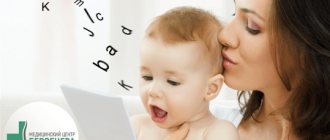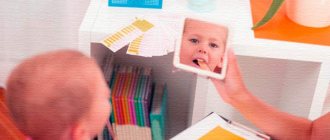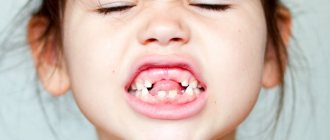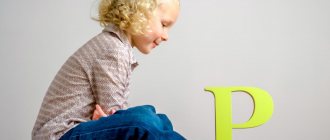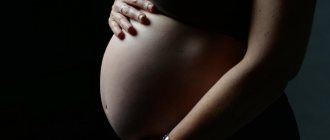Gnosis and its disorder
"Gnosis" is a term that is translated from Greek as "recognition." Consequently, its violations are violations of recognition, which is carried out by sensory perceptions. A person’s orientation in the surrounding world is directly related to the determination of the spatial relationship, size, shape of objects, as well as to the understanding of the meaning contained in the name of each of them. The stock of information about the world is formed from the analysis and synthesis of various streams of sensory impulses, and then stored in our memory. If the higher gnostic mechanisms are affected, the receptor apparatus, as well as the transmission of sensory impulses, are preserved. However, their interpretation and comparison of the received data with the images stored in memory are disrupted, which leads to agnosia, in which gnosis is upset. This leads to the fact that the perception of objects is preserved, but at the same time the feeling of their “familiarity” is lost. As a result, the surrounding world, which was previously familiar to a person in detail, becomes alien, devoid of meaning, and incomprehensible.
Gnosis is something that should be imagined not simply as recognition, comparison of an image. This is a process of continuous clarification, updating, and specification. The image is stored in a memory matrix. It is updated due to repeated comparison with the received information.
Visual agnosia
Visual gnosis is disrupted when the occipital cortex is affected. As a result, the patient sees an object, but cannot recognize it. There may be several options. In some cases, visual gnosis works as follows: a person is able to correctly determine the external properties of a given object (size, shape, color), but cannot recognize it. For example, a patient describes an apple as “something pink and round.” If you give a person this object in his hands, he will recognize it by feeling it. Thus, subject gnosis is violated. In other cases, the patient is unable to distinguish familiar faces. Then some patients with this disorder remember people by features such as a mole, clothing, etc. There are other cases of agnosia, when a person recognizes an object, can name its function and properties, but is not able to remember its name. They are classified as speech disorders.
In some cases, when visual-spatial gnosis is impaired, visual memory and spatial orientation may suffer. In fact, we can say that memory mechanisms are impaired even when a person does not recognize an object. Indeed, in this case it cannot be compared with the image located in the Gnostic matrix. There are also cases in which, upon re-examining an object, a person realizes that he has already seen it, but still cannot recognize it. A patient whose spatial orientation is impaired not only does not recognize houses, faces, etc., previously familiar to him, but can walk in the same place many times without realizing it. With visual agnosia, the ability to identify numbers and letters is often lost. In some cases, the ability to read is also lost. There are other options for how a violation of visual gnosis manifests itself. Patients with these disorders often say themselves: “I don’t see,” “I don’t know.” However, they see objects because they do not bump into them, they walk around them.
How memory, attention and reaction speed decrease with age
For individual age groups, their own standards for memory, attention and reaction speed, and speed of solving standardized problems have been developed. The general dynamics are such that from childhood until the age of 20-25, there is an increase in memory and attention, and an acceleration of learning processes. After 35 years, on average, there is a gradual decline in cognitive abilities, but the indicators remain within the population norm. The rate of decline in IMF primarily depends on the intensity and variety of daily mental load - the higher it is, the longer high intelligence is maintained. On the other hand, depression, increased anxiety, bad habits, chronic stress and lack of sleep can significantly reduce attention, reaction speed and short-term memory. In middle-aged people, these reasons often lead to a reversible decline in cognitive function.
The first cognitive function that suffers during natural aging is remembering new information and learning new skills.
This is most noticeable in older people and manifests itself in “old-fashionedness,” adherence to familiar devices and methods of communication, and difficulties in mastering new opportunities.
Cognitive decline in old age
As a rule, an elderly person himself begins to notice his “memory problems” - at the initial stage, complaints are formulated not only as forgetfulness (surnames, names), absent-mindedness, difficulties in finding words, but also as “heaviness or staleness in the head.” Sometimes the psychological difficulties of orientation in a changing life situation are perceived by a person as a general feeling of uncertainty and even dizziness. It can be difficult for an elderly person to master a new phone/smartphone or a new program. From the outside, one can notice a narrowing of the circle of interests and social circles, a reluctance to watch and an incomplete understanding of new films and performances. An alarming sign may be the difficulty of mastering a new unusual route or orientation in an unfamiliar place. Relatives may notice absent-mindedness and forgetfulness of an elderly person. As cognitive decline progresses, the person's own criticism also becomes lost. Then more complaints are expressed by the patient’s relatives, to whom his inability to care for himself becomes obvious. This may include sloppiness at home and in clothes that was previously unusual for a person, refusal to cook, difficulties in handling money, and the inability to use public transport independently.
Read also: 15 intriguing facts about uranium
A criterion for the development of dementia as a severe form of cognitive impairment is a person’s dependence on outside help.
Based on the severity of symptoms, cognitive impairment is divided into moderate cognitive impairment (self-care is preserved, neuropsychological testing reveals significant impairments) and dementia (self-care is impaired, neuropsychological testing reveals significant impairments) of varying degrees - mild, moderate and severe.
Some researchers distinguish a stage of mild (mild or subjective) cognitive impairment. In this case, the patient complains of forgetfulness, inattention, and inability to cope with something, but neuropsychological testing does not reveal a violation of general cognitive status. These symptoms may be a manifestation of depression, increased anxiety, situational fatigue, or the first preclinical signs of a neurodegenerative brain disease (Alzheimer's disease).
Auditory agnosia
They occur when the temporal lobe is affected in the area of Heschl's gyrus. In this case, a person cannot recognize sounds that were previously familiar to him: the sound of water, the ringing of a bell, the ticking of a clock, etc. Auditory gnosis in this case is impaired. Amusia occurs when the patient is unable to identify musical melodies. The directions of sounds cannot be distinguished also with auditory agnosia. With some of its types, the patient cannot determine their frequency.
Stereognosis, stereognosis
Complex types of sensitivity are localized in the cerebral cortex at the level of the superior parietal lobule, where there is no somatotopy. Complex types of sensitivity include stereognostic sensitivity (stereognosis, stereognosis), two-dimensional spatial sensitivity, a sense of localization and discrimination. The visual projection zone (visual cortex) occupies the area of the calcarine sulcus - the inner surface of the occipital lobe. The auditory projection zone (auditory cortex) occupies the center of the superior temporal gyrus and Heschl's gyrus. The vestibular projection zone is located next to the auditory zone. The olfactory projection zone is localized on the inner surface of the temporal lobe, in the gyrus of the hippocampus. The gustatory projection zone is located next to the latter, as well as in the area of the tire and the Reili island.
Sensitive agnosia
There are also sensitive agnosias, which arise as a result of impaired recognition of temperature, pain, tactile, proprioceptive images, as well as their combinations. These disorders appear in case of damage to the parietal region. These include, for example, body diagram disorder, or astereognosis. In some cases, a person is not only unable to identify an object by touch, but also to form an idea of its shape and surface features. Anosognosia also refers to sensitive agnosia. With it, a person is not aware of his defect, for example, paralysis. Sensitive agnosia includes phantom disorders.
Significance, role of the human cerebral cortex
In the article we will look at the localization of functions, sections, analyzers, fields, sections,
areas of the cortex of the cerebral hemispheres of the human brain (men, women). Neurologists, neuropathologists, reflexotherapists, reflexologists identify 4 main provisions, in relation to the practical activities of a neurologist, of the modern doctrine of the localization of functions in the cerebral cortex.
When do apraxia appear?
When the cortical mechanisms that are involved in these processes are affected, apraxia appears - special movement disorders. In this case, there are no violations of coordination or tone, no paralysis, it is even possible to carry out simple voluntary movements. However, more complex motor acts, purely human ones, are disrupted. As a result, the patient cannot perform simple actions such as lighting a match, combing his hair, fastening buttons, shaking hands, etc. Apraxia appears mainly when the dominant hemisphere is affected (parieto-temporo-occipital region). However, both halves of the human body suffer.
Apraxia can also appear in case of disturbances in the functioning of the subdominant right hemisphere (if we are talking about right-handers) and the corpus callosum, which connects both hemispheres of a person. In this case, it is defined only on the left. As a result of apraxia, the plan of action suffers. In other words, the continuous chain in which motor automatisms are combined turns out to be disrupted. Because of this, the patient, trying to complete this or that task, makes many unnecessary movements.
Parapraxia
In some cases, parapraxia is detected. It involves performing an action that only vaguely resembles a task. Varieties of perseveration are also observed. In this case, a person gets stuck on certain actions. For example, the patient is asked to make an inviting movement with his hand. He is then asked to wag his finger, but the person again performs the first movement.
In some cases of apraxia, ordinary, everyday actions are preserved, but professional skills are lost. For example, the ability to use a screwdriver, plane, etc. is lost.
Motor apraxia
In this case, the person is not able to perform the necessary actions according to the instructions, and possibly also by imitation. For example, he is asked to lace a shoe, cut paper with scissors or line it with a ruler and pencil, etc. The patient understands the task, but is unable to complete it. He is not even able to repeat the movement if he is shown clearly how it is done. In some cases, a person cannot perform even the simplest action, such as clapping, turning or squatting. Motor aphasia, also called apraxia of speech or Broca's aphasia, is one of the varieties of this disorder.
VI. Praxis . The study of praxis is preceded by a thorough acquaintance with the data of a clinical analysis of motor functions: the strength and accuracy of movements, the state of muscle tone, the presence of hyperkinesis, etc., not only in the limbs (arms), but also in the articulatory apparatus.
35. Ideational and ideomotor praxis are explored further by asking the patient to perform actions with real objects, for example: light a match, comb his hair, unbutton and fasten a button, etc.; actions with imaginary objects, for example: show how to saw wood, hammer nails, stir sugar in a cup; symbolic actions: say goodbye, beckon with a finger, give a military salute, etc.
36. Constructive praxis. Folding from sticks according to the model of simple and more complex geometric shapes: square, rhombus, complex broken line of 10 linear segments (complex figure of Ray). Drawing (without a sample) according to the assignment: house, man, star, cube, daisy, dial. Drawing geometric shapes and flipping them 180°, such as a triangle with a shaded corner, a trapezoid with a triangle inside, etc.
37. Dynamic praxis (according to A. R. Luria). The “fist-palm-rib” test is performed by visual demonstration with one (healthy) hand; in this case, the patient is asked to hit the table sequentially with the hand clenched into a fist, flat and with an edge: fist - palm - edge; rib - fist - palm; palm - rib - fist, etc. Test for reciprocal coordination of movements (according to N. I. Ozeretsky), in which the patient is asked to simultaneously clench one hand into a fist and straighten the other; these movements alternate several times. The test is carried out in the absence of paresis in patients. Test for mastering a given sequence of movements of the fingers (tapping on the table) by visual demonstration, for example: II-III-IV fingers; I—V—I fingers and other options. A test for mastering a given sequence of finger movements according to a proprioceptive demonstration (the subject’s eyes are closed, the order of movements is demonstrated using passive finger movements by the experimenter), for example: I - III - II fingers; II - I - IV fingers, etc. Reproduction of a given graphic stereotype, for example: fill the line as quickly as possible with the following series: XX000XX000XX. . . or 6660066600... There may be other variants of tests for dynamic praxis, during which special attention is paid to deautomation of the motor act, perseveration, echopraxia.
38. Oral praxis. Simple movements of the lips and tongue: stick out your tongue, puff out your cheeks, place your tongue between your teeth and lower lip. Complex movements of the lips and tongue: whistle, “blow out” a burning candle, spit, kiss, etc.
When assessing the results of tests in the “praxis” section, it is necessary to find out what violations may be caused by speech disorders (inability to retain a series of words, alienation of the meaning of words, etc.). It is also necessary to characterize the features of motor operations (discoordination disorders, perseveracia, echopraxia, exhaustion, etc.), their adequacy in relation to the situation given by the experimenter (for example, in response to a proposal to beckon with a finger, threaten it, etc.). The subject’s ability to correctly perceive clothing in relation to his own body (dressing air) is taken into account, as well as errors in the left (more often) or right (less often) visual field and other features of subtle purposeful movements and actions.
VII. Non-speech auditory gnosis . Tests for recognition of non-speech sounds, including musical melodies and rhythms, are most often carried out in the process of studying speech function, but are separated into a separate section. In this case, just as in the study of various aspects of speech, one first gets acquainted with the state of the more elementary aspects of hearing and auditory attention.
39. Recognition of familiar sounds and their sequences: rustling of paper, clinking of coins, clapping of hands, etc.
40. Recognition (identification) of rhythms. The experimenter sets the rhythm by tapping on the table - the subject must find an identical one among others on the diagram.
41. Recognition of the melodies of famous songs sung by the experimenter.
42. Reproduction of rhythmic sequences presented by ear. In one version of the experiment, the patient may be asked to hold his tongue between his teeth.
43. Play any melodies familiar to the subject.
VIII. Body diagram.
44. Right-left orientation. The subject is asked to show: his left hand, the right hand of the experimenter (sitting next to the subject), the left hand of the experimenter (sitting opposite the subject with his arms crossed on his chest).
45. Finger gnosis. The subject is asked to show his fingers according to verbal instructions: index finger, little finger, middle finger, thumb, little finger, ring finger. By imitation: show III finger, V finger, II finger, III finger, IV finger, I finger. In this case, the experimenter shows the fingers alternately of the left and right hands, changing the position of the hand in space each time. A test is also often used, when the patient is asked to find out, with his eyes closed, which fingers are moving passively by the doctor.
46. Reproduction of finger poses by imitation. The experimenter sits opposite the subject.
47. Reproduction of the relative position of the hands of two hands. The experimenter also sits opposite the subject. The last two tests are equally relevant to the study of praxis, in particular the visual-spatial organization of movements. When analyzing errors, one should take into account data from praxis studies, in particular drawings of “faces”, “daisies”, etc., in which errors in the left visual field may be noted. Data from clinical and psychological observation of the patient are also taken into account (his lack of awareness of paralysis and other defects - anosognosia, sensory impairment and other disorders). It is also necessary to note impairments in finger naming in studies of finger gnosis.
reading and counting – previous | next – gnosis
Methods of psychological diagnosis and correction in the clinic. Content
Constructive apraxia
Let's move on to the next type of apraxia, constructive. In this case, the patient is able to perform various actions both by verbal orders and by imitation. However, he cannot carry out a new motor act, or create a whole from parts. For example, he is not able to make a certain figure from matches, put together a pyramid, etc.
Features of the examination
Note that some types of apraxia are observed in disorders of gnosis. The person’s body diagram is disturbed, or he does not recognize the object, so he cannot perform tasks or does not perform them quite correctly or is uncertain.
It must be taken into account that praxis is always formed throughout the child’s development. Therefore, it is natural that young children cannot perform simple actions (fastening buttons, combing their hair, etc.).
Now you know what is meant by such terms as “gnosis” and “praxis”, that these are special mechanisms, disturbances in the functioning of which lead to corresponding disorders. The ability to correctly determine the cause of disorders is the key to the successful work of a psychiatrist.
System for examining praxis and gnosis in preschool children with motor alalia
Bibliographic description:
Matvienko, E. N. System for examining praxis and gnosis in preschool children with motor alalia / E. N. Matvienko, O. D. Minaeva. — Text: immediate // Pedagogy today: problems and solutions: materials of the II International. scientific conf. (Kazan, September 2022). - Kazan: Young Scientist, 2022. - pp. 68-71. — URL: https://moluch.ru/conf/ped/archive/270/12847/ (access date: 01/03/2022).
Speech therapy examination is aimed at identifying violations of various components of the speech system, their nature, as well as depth and degree.
The following principles can be identified as the basis for the diagnostic system [2]:
- The principle of an integrated approach. During the examination, the interaction of all specialists is necessary. Direction: medical, pedagogical and psychological.
- The principle of the systems approach is based on the idea of speech as a complex functional system, the structural components of which are in close interaction. In this regard, the study of communicative components involves identifying all disturbed aspects of the speech functional system: (phonetics, phonemics, vocabulary, grammar, syntax).
- The ontogenetic principle involves the development of a survey taking into account the sequence of appearance of forms of communication and speech functions, as well as types of activities in ontogenesis.
- The principle of accounting for the leading type of activity. When conducting an examination of children with alalia, it is necessary to start from the emotional involvement of the child; accordingly, all tasks should be presented in an interesting playful form.
- The etiopathogenetic principle presupposes the structure of the disorder, the causes, what is primary and what is secondary?
- The principle of dynamism provides for the study of the child.
Motor alalia is a systemic underdevelopment of expressive speech of a central organic nature, caused by the immaturity of linguistic operations in the process of generating a speech utterance with the relative preservation of semantic and sensorimotor operations [2].
The study of praxis and gnosis in preschool children with motor alalia is carried out according to the neuropsychological method of L. S. Tsvetkova [3].
Non-speech examination methods mean the study of motor functions: gnosis and praxis. Research using non-speech methods can reveal disorders of the parietal lobe, premotor and posterior frontal regions, and occipital regions.
Gnosis (Greek origin) recognition [1]. With the help of sensory (smell, sight, taste, touch, hearing) perception, a person is capable of recognizing surrounding objects.
The term praxis is (Greek origin) the ability to perform purposeful voluntary movements and actions [1]. It should be noted that in this case we are talking about purposeful movement (nervous tics and other neurological diseases manifested by muscle twitching are not included in this group).
The study of gnosis in preschool children with motor alalia is carried out in the following areas:
The diagnostic system is presented in the table.
Table 1
System for examining gnosis in preschool children with motor alalia
| № | Contents of methods |
| I | Study of Gnosis |
| 1 | Perception of objective, realistic images Instructions “What is drawn here?” It is important to note at this stage that the child follows with his eyes from bottom to top and/or from right to left (vectors of perception). Next to the technique, a drawing is opened and the child is asked to name the two, then three, images shown in the same order. We have presented several options for pictures; in the study we use option 1, 2, 3. |
| 2 | Crossed out images Instructions “What is drawn here?” |
| 3 | Poppelreuter figures (overlaid images). Instructions: “What is drawn here?” Option 1. The child is presented with several options for pictures; option 1, 2, |
| 4 | Unfinished images Instructions: “What is drawn here?” |
| 5 | Chimeric images Instructions: “What is drawn here?” If the child does not immediately notice the “catch,” you should ask the question: “Is that all? Is everything drawn correctly? The child is presented with several options for pictures; option 1, 2, 3 is used. |
| 6 | Facial Gnosis The subject is presented with a picture depicting people's faces. Instructions: “Who is pictured here?” After listing, the experimenter asks more difficult questions: the experimenter shows “How are these people different?”; the experimenter asks the child to point out the difference in age, clothing, hairstyle, etc. |
| Conclusion: 0 points — performs the task independently without the help of an experimenter; 1 point - a number of minor errors are noted that are corrected by the child himself, practically without the participation of the experimenter; 2 points - completes the task after stimulating assistance, hints and leading questions; 3 points - failure to complete the task. |
The study of praxis in preschool children with motor alalia is carried out in the following areas:
The diagnostic system is presented in the table.
table 2
System for examining praxis in preschool children with motor alalia
| № | Contents of methods |
| I | Study of kinesthetic praxis. |
| 1 | Praxis of poses based on a visual model Instructions: “Do as I do.” The experimenter sequentially demonstrates to the child a number of manual poses: - index and thumb (ring, middle) fingers folded into a ring; - the hand is clenched into a fist, but the little finger is pointed forward; - the hand is clenched, but the index finger and little finger are pointed forward, etc. Examining the right and left hand. |
| 2 | Praxis of poses according to the kinesthetic model. Instructions: “Close your eyes. Can you feel how I put my fingers together?” The experimenter puts the child's fingers into manual poses. Then he straightens the child’s hand and asks him to reproduce the given pose. |
| 3 | Transferring poses according to a kinesthetic pattern. Instructions: “Close your eyes. Can you feel how I put my fingers together? Fold them in exactly the same way on the other hand.” The transfer of poses is carried out first from the leading hand (for right-handers from right to left), and then vice versa (from left to right). |
| 4 | Oral praxis. Instructions: “Do as I do.” The experimenter performs the following actions: — smiles, stretches his lips into a tube; - puffs out cheeks; - sticks out his tongue straight, raises it to his nose, runs it over his lips; - frowns, raises eyebrows, etc. Every movement is reproduced by the child. An option would be to perform this test according to instructions, such as: “Reach your tongue to your nose” or “Frown.” But in this case, it is necessary to differentiate secondary errors that arise in the child due to misunderstanding, etc. |
| II | Study of kinetic (dynamic) praxis |
| 1 | "Fist- rib- palm". Instructions: “Do as I do.” The experimenter performs a series of movements: - a fist placed on the edge, an outstretched palm placed on the edge, the palm lying on the table; — only the poses change, the hand itself does not change its location. Twice the experimenter performs the task with the child slowly and silently, then the experimenter invites the child to complete the exercise at a faster pace. Then with your tongue fixed and your eyes closed. Both hands are examined in turn. |
| 2 | Graphic test “Fence” Instructions: The experimenter draws a sample for the child: Instructions: “Continue the pattern without lifting the pencil from the paper.” |
| 3 | Reciprocal hand coordination. Instructions: “Put your hands on the table. Do as I do". The hands are placed side by side: one is extended, the other is folded into a fist, then at the same time the first hand is clenched into a fist, and the second is straightened, while the hands remain in one place. The experimenter performs the task together with the child, then independently without the help of an adult. |
| 4 | Oral kinetic praxis. Instructions: “Do as I do.” Experimenter, for example: - smiles and frowns; - clicks his tongue several times, whistles twice and clicks his tongue; — touches the left corner of his mouth with his tongue, then the right corner, then puffs out his cheeks. |
| Conclusion: 0 points — performs the task independently without the help of an experimenter; 1 point - a number of minor errors are noted that are corrected by the child himself, practically without the participation of the experimenter; 2 points - performs the task after stimulating assistance; 3 points - failure to complete the task. |
Summarizing the results of the examination, we write a conclusion.
Literature:
- Lalaeva, R.I., Paramonova, L.G., Shakhovskaya, S.N. Speech therapy in tables and diagrams - M.: Paradigma, 2017–216 p.
- Speech therapy: Textbook for students of defectology. fak. ped. universities / Ed. L. S. Volkova, S. N. Shakhovskaya. - M.: VLADOS, 2008. - 680 p.
- Tsvetkova, L. S. Methods of neuropsychological diagnostics of children - M.: Cogito-center, 2008. - 128 p.
Key terms
(automatically generated)
: instruction, motor alalia, experimenter, score, picture option, child, hand, diagnostic system, kinesthetic sample, child himself.
